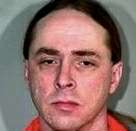
1962 - 2010
Jeffrey Timothy Landrigan
Summary
Name:
Jeffrey Timothy LandriganYears Active:
1982 - 1989Birth:
March 17, 1962Status:
ExecutedClass:
MurdererVictims:
2Method:
Stabbing / StrangulationDeath:
October 26, 2010Nationality:
USA
1962 - 2010
Jeffrey Timothy Landrigan
Summary: Murderer
Name:
Jeffrey Timothy LandriganStatus:
ExecutedVictims:
2Method:
Stabbing / StrangulationNationality:
USABirth:
March 17, 1962Death:
October 26, 2010Years Active:
1982 - 1989Date Convicted:
June 28, 1990bio
Jeffrey Timothy Landrigan was born on March 17, 1962, in the United States. His early life was marked by instability and violence. Adopted shortly after birth, Landrigan grew up unaware that his biological father, Darrel Hill, was a convicted murderer who had been sentenced to death in Arkansas. Hill was convicted of killing Arkansas Game and Fish Commission officer Donald Teague during a gas station robbery in Pencil Bluff in February 1980. The revelation of Landrigan’s biological lineage later became a point of discussion in analyses of his criminal behavior, though there is no evidence the two had contact or that this knowledge influenced his actions.
Landrigan’s childhood and adolescence remain largely undocumented, but records indicate a troubled youth with early encounters with the law. As a young adult, he developed a pattern of violent behavior, which escalated dramatically in 1982 when he committed his first murder. That year, in Dewey, Oklahoma, Landrigan stabbed and killed Greg Brown — reportedly his best friend — during an altercation. He was convicted of first-degree murder and sentenced to life imprisonment. However, this conviction was later overturned on appeal, and Landrigan pleaded guilty to second-degree murder, receiving a 20-year sentence.
While incarcerated, Landrigan’s behavior remained volatile. He developed a reputation for defiance, aggression, and a complete lack of remorse — characteristics that would later be cited by a sentencing judge as evidence of his disregard for human life. His violent tendencies and refusal to conform to prison rules culminated in his escape from the Oklahoma facility in 1989, a decision that would lead to another homicide and ultimately seal his fate.
murder story
After escaping from an Oklahoma prison in 1989, Jeffrey Landrigan fled to Phoenix, Arizona. There, he continued a life of crime, eventually targeting 42-year-old Chester Dean Dyer during a burglary. On October 1989, Landrigan broke into Dyer’s residence, and in the course of the robbery, he attacked and murdered him. Evidence presented at trial showed that Dyer was beaten and strangled during the assault. Landrigan was apprehended shortly after the murder and charged with first-degree murder and armed burglary.
His trial was notable for his defiant and uncooperative behavior. Landrigan actively obstructed his own defense, forbidding his attorney from presenting mitigating evidence that might have influenced the jury’s sentencing recommendation. At sentencing, the presiding judge characterized Landrigan as “a person who has no scruples and no regard for human life and human beings,” reflecting the court’s view of his repeated acts of violence and refusal to express remorse.
In 1990, Landrigan was convicted of first-degree murder and sentenced to death. His legal appeals spanned nearly two decades, during which he continued to reject opportunities to present mitigating evidence or challenge his sentence on humanitarian grounds. The courts consistently upheld his death sentence, citing his violent history and the nature of the crime.
By the late 2000s, Landrigan’s case gained renewed attention due to issues surrounding the lethal injection process. A global shortage of sodium thiopental — a barbiturate used as the first drug in the three-drug execution protocol — forced the state of Arizona to source the drug from abroad, possibly from the United Kingdom. This raised significant ethical and diplomatic concerns, as the European Union prohibits the manufacture and export of substances used in capital punishment. British diplomats objected to the use of UK-sourced thiopental in U.S. executions, and the controversy prompted the EU to tighten trade regulations. By December 2010, the UK had banned exports of sodium thiopental for use in executions, and by December 2011, the EU extended restrictions across the bloc.
Despite the controversy, Landrigan’s execution proceeded. On October 26, 2010, he was executed by lethal injection at the Arizona State Prison Complex in Florence. He was 48 years old. Landrigan was the 44th person executed in the United States in 2010 and the 24th person executed in Arizona since the reinstatement of the death penalty in 1976.
Landrigan’s execution remains historically significant not only because of his violent criminal record and refusal to seek clemency, but also because it marked a turning point in the international debate over pharmaceutical involvement in capital punishment. His case underscored how the global medical and political community’s views on the death penalty can directly impact the U.S. justice system — even in the final moments of a condemned prisoner’s life.